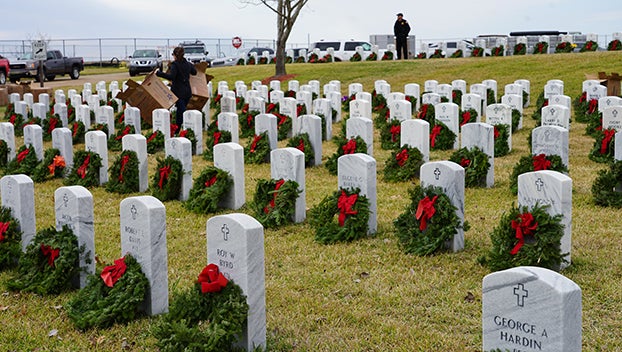Officials: Gun-related juvenile crime down
Published 12:13 am Sunday, February 1, 2015
By Nita McCann
The Natchez Democrat
NATCHEZ — Despite some high-profile incidents—particularly the recent shooting of Jessie Taylor Jr.— local judicial and law enforcement officials say the number of gun-related juvenile offenses in Natchez and Adams County has actually decreased since the early 1990s.
Statistics can be hard to come by because state law requires that juveniles older than 13 who commit a crime involving a firearm be referred to the adult justice system, said District Attorney Ronnie Harper.
“A lot of times, we don’t ever see those cases because they automatically go to circuit court,” said Walt Brown, Adams County Youth Court judge.
In general, the number of cases referred to Adams County Youth Court has decreased. The latest statistics show that 518 cases were referred to youth court last year, compared to 538 the year before.
The Centers for Disease Control have kept statistics on youth violence nationwide, noting that it is a significant public health issue and that homicide is the second leading cause of death for teenagers.
According to CDC numbers, 12 percent of homicide victims in the United States in 2010 were ages 13 to 19. Of those victims, 85 percent were killed with firearms.
Locally, former Adams County Youth Judge John Hudson said juvenile offenses, including violent offenses, have been on the decrease since 1993. The major reason for that peak, he added, was demographics.
“That’s when you had a higher number of teenagers,” Hudson said. “Ever since then, I’d say the number of cases (of gun violence) has seen a gradual decrease.
“When you have someone that gets killed, we have a tendency to say the sky is falling, but my experience has been the opposite.”
Natchez Police Department Lt. Craig Godbold and Adams County Sheriff Chuck Mayfield also said they have not seen an increase in youth violence involving guns over the last several years. Juveniles often steal guns from family and friends or buy cheap weapons on the street, they added.
Although it is not the case that every adolescent who commits a gun-related crime is unsupervised, that is a common factor in many cases, Mayfield said.
“Some have little or no supervision, and some sneak out in the middle of the night,” he added.
Among high school students nationwide in 2013, 18 percent said they had carried a weapon on school grounds in the 30 days before the survey, according to CDC numbers. Six percent had carried firearms to school.
The Natchez-Adams School District has been fortunate in recent years not to have had gun violence on school grounds, said district Safety and Security Officer Ray Brown. That does not mean, however, that the schools are immune from the impact of such violence.
“When you have someone hurt or killed out in the community, that’s going to effect the students when they come to school on Monday,” Ray Brown said. “Mentally, it certainly affects them.”
Officials in law enforcement and the local justice system said no easy solutions exist to end all gun violence among youth.
“We all need to hold ourselves accountable — not just parents, but everyone,” Ray Brown said. “When we see a youth in trouble, we need to take an active part in their lives.
“What we see is kids that are loud and disobedient, but that’s a cry for help.”
One point Hudson emphasized was that there is no such thing as a “typical” offender. “We have to be careful not to paint all kids with a bold stroke,” he said.






